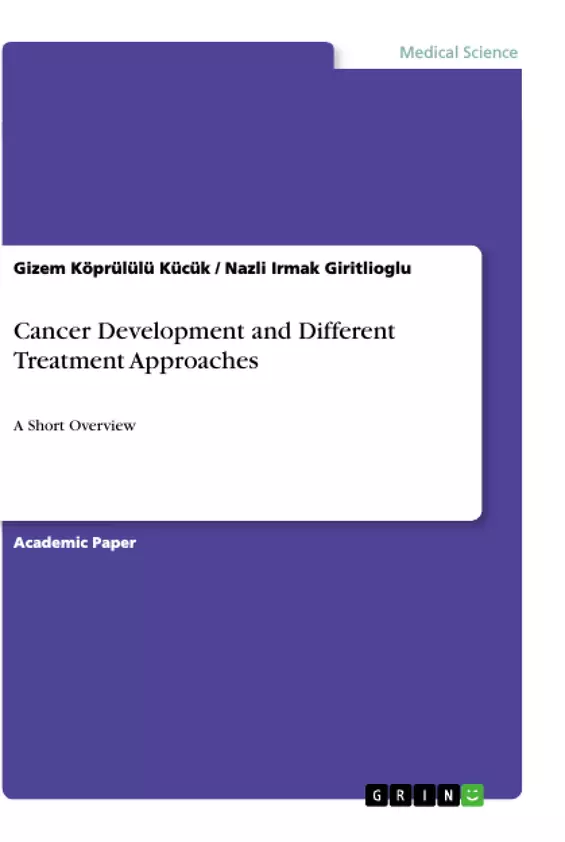The paper is discussing different approaches for cancer treatments. After a short introduction of how cancer develops, the paper is about Radiotherapy, TrueBeamX and Trilogy.
Cancer is the uncontrolled division, proliferation, and accumulation of cells in an organism. It can affect a single organ as well as spread to distant organs and show its effect. Cancer has been a common problem in humans and animals throughout known history. Cancer is a complex disease that occurs with uncontrolled division and proliferation of cells and under the influence of genetic and environmental conditions.
Cancer is also a personal disease, although there are more than 100 known types of cancer and standard approaches have been developed for certain types of cancers. It is not surprising that people have different responses to similar treatments since the DNA of any person in the world is not alike. With the advancement of technology, new treatment methods are being developed in addition to the treatments available today. In addition to the standard chemotherapy, radiotherapy and surgical methods, vaccines, biological, hormonal, targeted and gene therapies are increasingly being used. Although some standards have been determined, different approaches and treatments are applied for each type of cancer.
Inhaltsverzeichnis (Table of Contents)
- Cancer Development
- Properties and Metabolism of Cancer Cells
- Cancer Treatment Approaches
- Radiotherapy
- TrueBeam X
- Trilogy
- Elekta Versa
- Linac
- Chemotherapy
- Surgery
- Hormone Therapy
- Immunotherapy
- Gene Therapy
Zielsetzung und Themenschwerpunkte (Objectives and Key Themes)
This text aims to provide a comprehensive overview of cancer development and treatment approaches. It explores the mechanisms behind cancer formation, the characteristics of cancer cells, and the various methods employed in cancer treatment.
- Cancer development and its causes
- The unique properties and metabolism of cancer cells
- The different types of cancer treatment approaches
- The role of genetics and environment in cancer development
- The limitations and advancements in cancer treatment
Zusammenfassung der Kapitel (Chapter Summaries)
- Cancer Development: This chapter delves into the intricate process of cancer development, explaining how uncontrolled cell division and proliferation lead to tumor formation. It discusses the role of genetic and environmental factors, including oncogenes, tumor suppressor genes, DNA repair genes, and carcinogens, in the development of cancer.
- Properties and Metabolism of Cancer Cells: This chapter focuses on the distinct characteristics and metabolic processes of cancer cells. It highlights their ability to evade growth control mechanisms, acquire self-sufficiency in growth signals, resist programmed cell death (apoptosis), and sustain proliferative signaling, among other properties. The chapter also explores the unique metabolic pathways that cancer cells employ for survival and growth.
- Cancer Treatment Approaches: This chapter provides a detailed overview of the various treatment approaches for cancer. It encompasses radiotherapy, chemotherapy, surgery, hormone therapy, immunotherapy, and gene therapy, explaining the principles, mechanisms, and limitations of each approach. The chapter also discusses advancements in these fields and future prospects.
Schlüsselwörter (Keywords)
The primary keywords and focus topics of this text include cancer development, cancer cells, oncogenes, tumor suppressor genes, carcinogens, cancer treatment, radiotherapy, chemotherapy, surgery, immunotherapy, and gene therapy. The text delves into the mechanisms of cancer formation, the unique properties of cancer cells, and the diverse approaches to cancer treatment, emphasizing the importance of understanding these concepts for effective cancer management.
- Quote paper
- Gizem Köprülülü Kücük (Author), Nazli Irmak Giritlioglu (Author), 2020, Cancer Development and Different Treatment Approaches, Munich, GRIN Verlag, https://www.grin.com/document/903467



